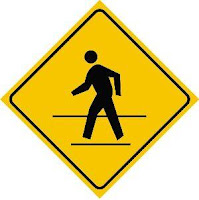Well, I agreed that nowadays there are plenty of new designs that don't make sense were produced. Designers are coming out of art of pieces within contemporary design and culture due to the prosperity and futuristic in the world. They have to design something is new in forms, with or without functionalist which are innovative.
For example, Satyendra Pakhale designs, among other things, objects, furniture, bureau accessories, and other tabletop. He is able to combine east with west, craft with technology and function with fun. Satyendra is the most interesting young designer at work today. Therefore, I think that designers create contemporary objects blending the 'old' and the 'new', 'artisan' and 'highly industrialized'.
 This is the ceramic chairs that designed as a ceremonial object of welcome. These combine with earthenware and stoneware clay. The ceramic elements are fired separately and then connected with PU glue. The soft-satin surface is a thin layer of clay slip known as 'terra sigillata'. These one-of-a-kind chairs have been manufactured by Satyendra himself at the European ceramic work centre in Amsterdam, NL.
This is the ceramic chairs that designed as a ceremonial object of welcome. These combine with earthenware and stoneware clay. The ceramic elements are fired separately and then connected with PU glue. The soft-satin surface is a thin layer of clay slip known as 'terra sigillata'. These one-of-a-kind chairs have been manufactured by Satyendra himself at the European ceramic work centre in Amsterdam, NL.PART B
Look at Fig. 2. How do you feel about it? What kind of emotions does it trigger you? Refer to your previous studies on Semiotics.
 I feel curious and wonder how would its usage to us nowadays. How much it cost? hehe... I think this 'NOW' word on the watch can be considered as an index in the three categories of Semiotics. For me, I am a person that must wear a watch if I want to go out anywhere. I am already familiar to see 'what time is it now'? I'll uncomfortable if I forget to wear my watch out there just like lack of something and my emotion will be a little bit blue sometime, weird and uncomfortable. Maybe for some other else they don't really need a watch to refer the time but for me the watch is on my hand and I can refer the time anywhere even my hand phone or laptop are showing the time. This watch is very cool for me but I would also want to know the price of a product that I am interested.
I feel curious and wonder how would its usage to us nowadays. How much it cost? hehe... I think this 'NOW' word on the watch can be considered as an index in the three categories of Semiotics. For me, I am a person that must wear a watch if I want to go out anywhere. I am already familiar to see 'what time is it now'? I'll uncomfortable if I forget to wear my watch out there just like lack of something and my emotion will be a little bit blue sometime, weird and uncomfortable. Maybe for some other else they don't really need a watch to refer the time but for me the watch is on my hand and I can refer the time anywhere even my hand phone or laptop are showing the time. This watch is very cool for me but I would also want to know the price of a product that I am interested.






